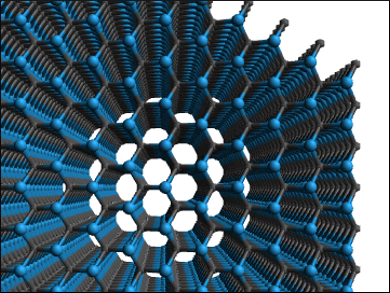The nucleation of crystals to form solid-state materials affects the chemical and physical properties of the bulk material. However, the observation of how these processes occur and the resulting material that forms is not the most straightforward of tasks, especially when some of the precursor materials are amorphous in nature.
Yu Wang and colleagues, Nanchang University, China, Chee-Leung Mak, The Hong Kong Polytechnic University, Hong Kong SAR, China, and colleagues have used in-situ transmission electron microscopy (TEM) and molecular dynamics (MD) simulations to observe and simulate the formation of tungsten carbide. The team found that the material forms through an indirect two-step mechanism, rather than a direct one-step mechanism.
The two-step process is bridged by a spinodal-structured amorphous intermediate. This intermediate reorganizes from an amorphous precursor, and it transforms into a crystalline nucleus. It was found to act as a metastable buffer within the free energy gap between the precursors and the final nanocrystalline structure. It is thought that this indirect route could also be the mechanism for the formation of other 2D and 3D solid-state materials.
- Observable Two-Step Nucleation Mechanism in Solid-State Formation of Tungsten Carbide,
Linfeng Fei, Xianglai Gan, Sheung Mei Ng, Hui Wang, Ming Xu, Wei Lu, Yanchun Zhou, Chi Wah Leung, Chee-Leung Mak, Yu Wang,
ACS Nano 2018.
https://doi.org/10.1021/acsnano.8b07864



